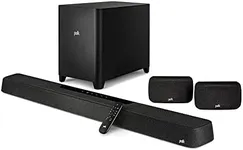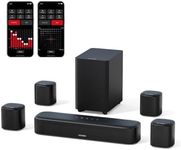Buying Guide for the Best Wireless Surround Sound Systems
Choosing a wireless surround sound system can greatly enhance your home entertainment experience, making movies, music, and games more immersive. The key is to find a system that fits your room, your listening habits, and your setup preferences. Start by thinking about the size of your space, how many speakers you want, and how you plan to connect everything. Understanding the main features will help you make a choice that matches your needs and ensures you get the best sound quality and convenience.Number of ChannelsThe number of channels refers to how many separate audio signals (and therefore speakers) the system uses. Common setups include 5.1 (five speakers and one subwoofer) and 7.1 (seven speakers and one subwoofer). More channels generally mean a more immersive sound, with better separation of effects and dialogue. For smaller rooms or simpler setups, a 5.1 system is usually enough, while larger rooms or those seeking a more cinematic experience might benefit from 7.1 or even higher. Consider your room size and how much surround effect you want when choosing the number of channels.
Wireless TechnologyWireless surround sound systems use different technologies to connect the speakers without cables, such as Wi-Fi, Bluetooth, or proprietary wireless connections. Wi-Fi generally offers better sound quality and range, while Bluetooth is easier to set up but may have more limitations. Some systems use their own wireless protocols for more reliable connections. If you want the best sound and plan to stream high-quality audio, look for Wi-Fi-based systems. If you value simplicity and portability, Bluetooth might be enough. Think about your home’s wireless environment and what devices you want to connect.
Speaker Placement and SizeSpeaker placement and size affect both the sound quality and how the system fits into your room. Larger speakers can produce deeper, richer sound but take up more space, while compact speakers are easier to hide but may not deliver as much power. Some systems offer flexible placement options, including wall-mounting or stands. Consider the layout of your room, where you can place speakers, and whether you want them to blend in or stand out. Your room’s shape and furniture can also influence how sound travels, so think about where you’ll be sitting most often.
Audio Formats SupportedAudio formats like Dolby Digital, DTS, and newer ones like Dolby Atmos or DTS:X determine how the system processes and delivers surround sound. More advanced formats can create a more realistic and immersive experience, especially with height effects or 3D sound. If you watch a lot of movies or play games that support these formats, look for a system that can handle them. If you mostly listen to music or watch TV, basic surround formats may be enough. Check what your main content sources support and match the system accordingly.
Connectivity OptionsConnectivity options refer to how the system connects to your TV, streaming devices, or other audio sources. Common connections include HDMI, optical, and auxiliary inputs, as well as wireless streaming from phones or tablets. More connection types give you more flexibility to use different devices. If you have a modern TV and want the best sound, look for HDMI ARC or eARC support. If you plan to stream music from your phone, make sure the system supports Bluetooth or Wi-Fi streaming. Think about what devices you use most and make sure the system can connect easily.
Subwoofer TypeThe subwoofer handles the deep bass sounds that add impact to movies and music. Some systems have wireless subwoofers, which are easier to place anywhere in the room, while others are wired. The size of the subwoofer affects how powerful the bass will be. If you love action movies or bass-heavy music, a larger or more powerful subwoofer will make a big difference. If you have limited space or want less vibration, a smaller subwoofer may be better. Consider your listening preferences and room size when choosing the subwoofer type.
Ease of Setup and UseEase of setup and use is about how simple it is to get the system running and control it day-to-day. Some systems offer automatic calibration, app-based controls, or voice assistant integration, making them easier to use. If you’re not comfortable with technology, look for systems with clear instructions and simple remote controls. If you like smart home features, check for compatibility with your preferred voice assistant. Think about how much time you want to spend setting up and how you prefer to control your system.
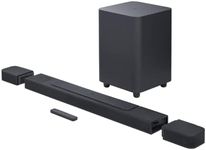



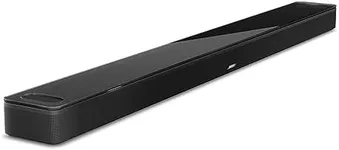


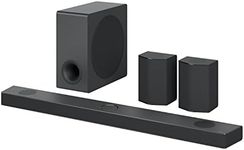


![SAMSUNG HW-Q990C/ZC- 11.1.4ch Soundbar with Wireless Dolby Audio, Q-Symphony, SpaceFit Sound Pro, Game Mode Pro, Airplay 2, Alexa Built-in [Canada Version] (2023)](https://images-proxy.bestreviews.guide/ik3wKeN2r8RP0FO3gtBA2PUc8Bk=/0x150/https://m.media-amazon.com/images/I/31ZVirVstiL._AC_CX679_.jpg)
